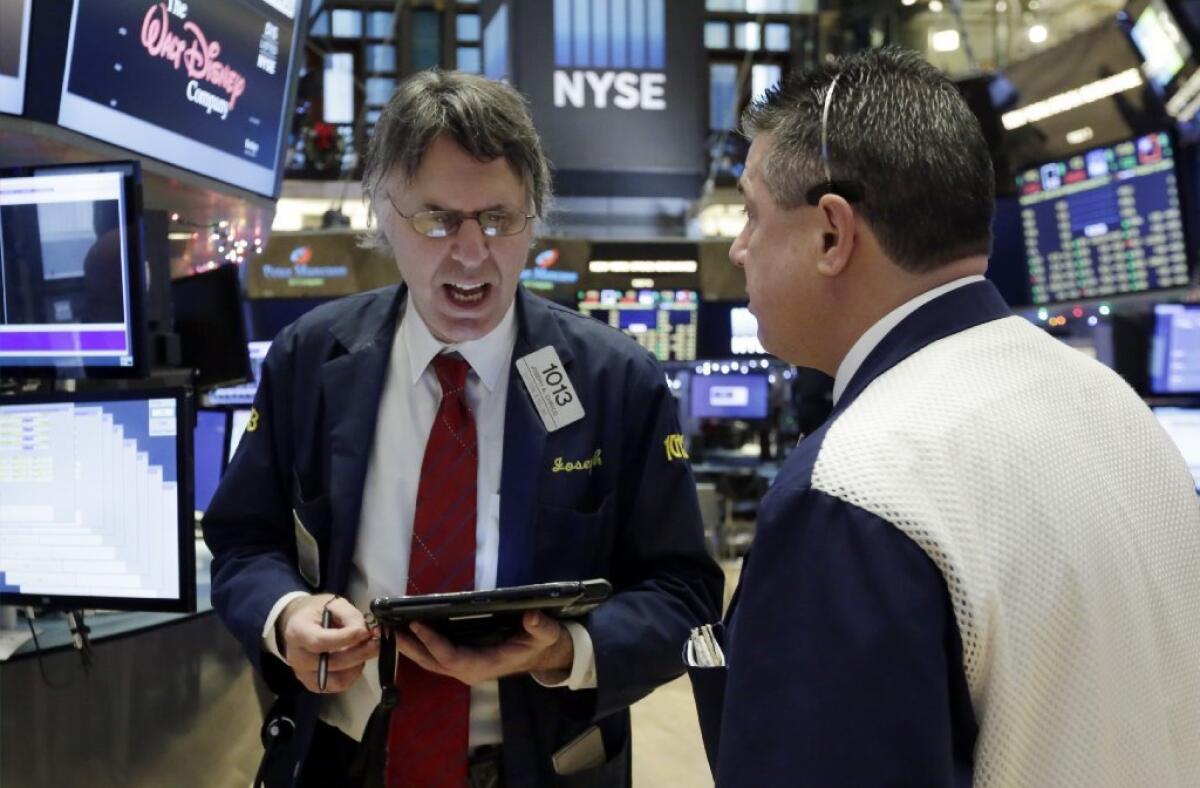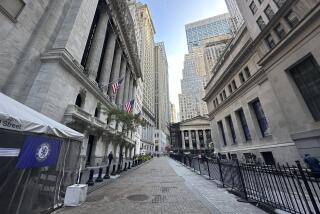Analysis: Will the Fed signal the next interest rate hike as strongly as this one?

Traders on the floor of the New York Stock Exchange have been preparing for a Fed rate hike for weeks.
Reporting from Washington — In the end, Federal Reserve Chair Janet L. Yellen had almost no choice.
For weeks she and her colleagues had given such loud and clear signals of an imminent rate interest hike that there was near-universal agreement on Wall Street that the historic action would be taken Wednesday. Financial markets already had priced in a quarter-point rate increase.
Had Yellen announced instead that the Fed was keeping its benchmark interest rate near zero for a little longer, it likely would have shocked markets and struck a severe blow to Yellen and the institution’s credibility. She did not want to be accused again of dithering, as she was last fall after holding off a rate increase at the Fed’s September meeting due to concerns about the global impact of China’s slowing economy.
SIGN UP for the free California Inc. business newsletter >>
“They painted themselves into a corner,” said Vincent Reinhart, former chief economist for Morgan Stanley. who previously worked as an economist for the Fed’s monetary policy committee.
The question now is: Will the once-secretive Fed be as open about the next rate hike?
In the run-up to Wednesday’s meeting, Fed officials were “talking exactly about when they expect to raise interest rates almost on a daily basis,” said Paul Eitelman, investment strategist at Russell Investments, an asset management firm based in Seattle. “Going forward, that degree of forward guidance is unlikely to persist .... And with the Fed becoming less transparent, we are likely to see heightened volatility” in financial markets.
In recent years, financial markets have grown increasingly accustomed to more openness from the Fed, as the central bank bet that increased transparency would strengthen its policy effectiveness. The Fed’s so-called forward guidance has been a powerful tool, alongside rock-bottom interest rates and huge bond purchases, to help shape market expectations -- which are important in influencing investment, borrowing and spending decisions.
It mostly worked. Markets remained relatively calm in recent years thanks in part to the Fed’s repeated communications that it would keep rates extremely low for a considerable period.
But the expected shift toward a Fed that offers less explicit guidance would mark a return to more normal times, reinforcing the notion that rate hikes will depend on incoming data.
In keeping her options open, Yellen, during a press conference Wednesday, resisted being pinned down on any specific numerical movement on inflation that might trigger the Fed to raise rates again. Inflation has been running well below the central bank’s 2% target.
With Yellen and other Fed officials likely to be more vague, markets will be looking even more closely at the Fed’s quarterly economic outlook, especially on inflation, and the projections by individual policymakers on where they see the benchmark interest rate in the next few years.
The new projections by Fed officials Wednesday pointed to four rate hikes for next year, one at every other meeting, each a quarter-point. But investors are currently expecting that the Fed will raise rates by that amount just two times in 2016.
“The Fed never wants to have an environment in which their own expectations deviate in a big way from what the market is expecting,” said Eitelman. “If that were to be the case, it’s certainly a source of potential surprise and a big shock and volatility in financial markets.”
Another feature of the Fed’s expanded communications practice is the quarterly news conference held by the Fed chief. But it, too, has become a double-edged sword that may need to be revised.
Started by former Fed Chair Ben S. Bernanke in 2011, the usually hourlong question-and-answer session comes right after the release of the Fed’s short policy statement. That has allowed the Fed leader to explain policymakers’ decisions and provide clarity to their forward guidance.
See more of our top stories on Facebook >>
But the news conference is held just four times a year, at the conclusion of every other Fed meeting. As such, analysts say, many people have come not to expect important Fed decisions at the other four meetings that are not followed by media sessions.
Moreover, research suggests that there’s less uncertainty, or volatility, in markets on days when there’s a news conference coming later, said Oliver Boguth, assistant professor of finance at Arizona State University’s business school. He argued that the Fed has unintentionally trained markets to read too much into the news conferences.
Some experts have suggested that the Fed chair instead hold a news conference after every monetary policy meeting. But the risk in doing that, at least in the current climate, is that it could be interpreted that the Fed was making the change because it wants to raise rates more quickly than previously thought.
“The problem with forward guidance is that it’s a spectrum, but the market is thinking black and white -- raise quickly or not quickly,” said Diane Swonk, chief economist and longtime Fed watcher at Mesirow Financial in Chicago. “Forward guidance is an art more than a science.”
Reinhart, the former Morgan Stanley economist and now visiting scholar at the American Enterprise Institute, said the Fed was in a “very uncomfortable position.”
“They do not want to be contracted to a path or have policy forced upon them,” he said. “At the same time, they want to be reassuring to the market and that they’re not tightening [monetary policy] too quickly.”
Follow me on Twitter @dleelatimes
MORE BUSINESS NEWS
Southern California home sales edge up in November
California regulators propose new rooftop solar fees
EPA report shows backsliding on auto fuel economy and emissions, critics say
More to Read
Inside the business of entertainment
The Wide Shot brings you news, analysis and insights on everything from streaming wars to production — and what it all means for the future.
You may occasionally receive promotional content from the Los Angeles Times.











